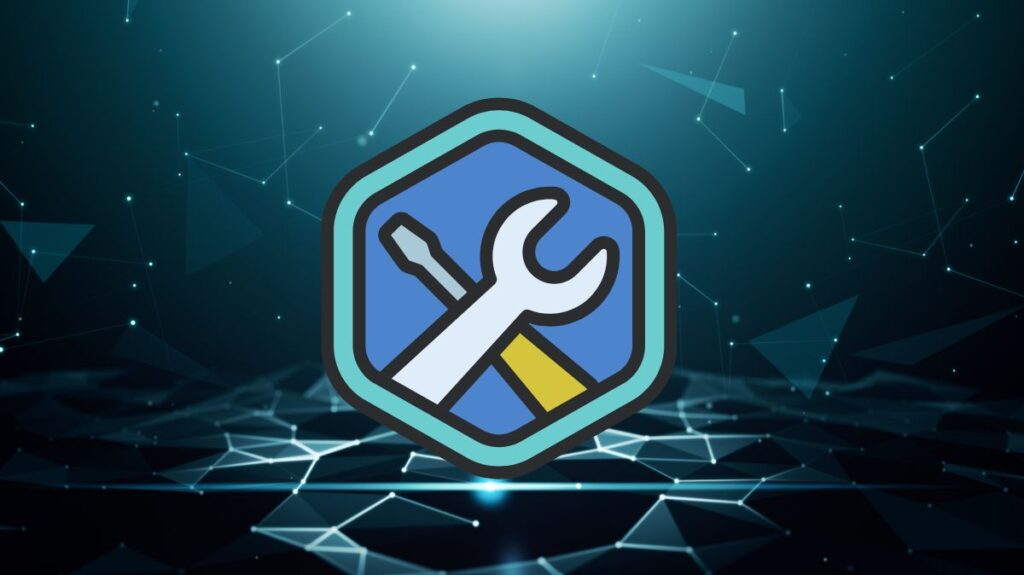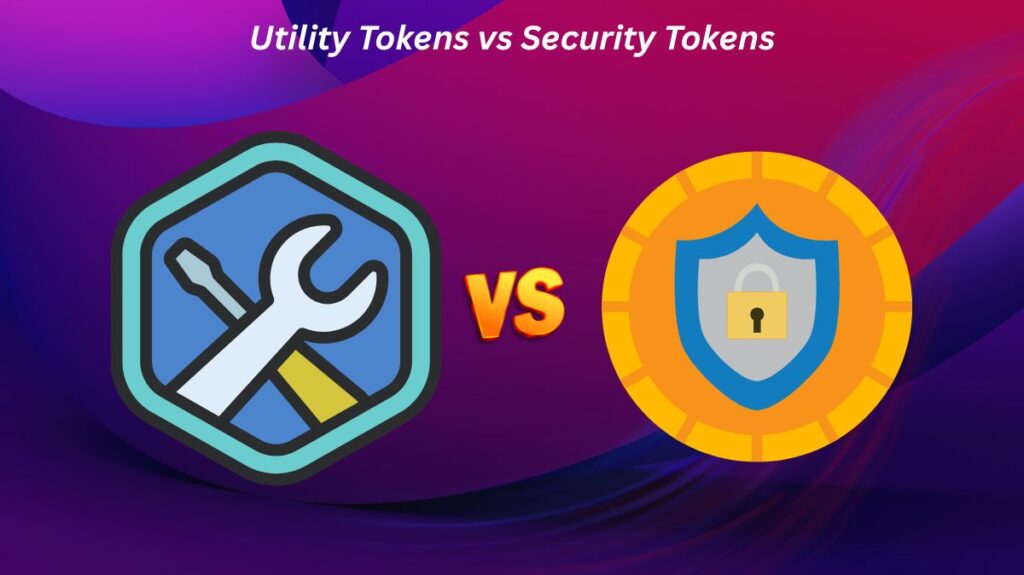Decipher Utility Tokens vs Security Tokens. Explore the legal and functional variations, from consumer access to profit-sharing, crucial for anyone navigating the diverse world of digital assets.
Within the bitcoin ecosystem, utility tokens also referred to as user tokens or app coins are an essential kind of digital asset. They are made especially to give users access to certain goods, services, or features in a blockchain-based platform or project. In essence, they serve as a “digital key” that may be used to access features and services within a particular cryptocurrency ecosystem.
What Are Utility Tokens?

Digital assets known as utility tokens are designed to offer unique services or features within a given blockchain-based project or platform. Giving users access to particular resources or services inside a particular crypto ecosystem is how they get their worth. Utility tokens have a practical use, in contrast to conventional currencies or other tokens like security tokens or soulbound tokens.
An initial coin offering (ICO), initial exchange offering (IEO), or other token generation event (TGE) is usually used to issue them. It’s crucial to remember that utility tokens are issued all at once and distributed in accordance with the project’s regulations; they cannot be mined. They are frequently employed to construct a platform’s internal economy and raise money for project development.
Key Characteristics of Utility Tokens
Functionality: Their main objective is to make certain services or features within a blockchain project or platform accessible.
Non-ownership of Underlying Assets: Utility tokens are not the same as ownership of an item, shares in a business, or the right to a cut of the profits. One important difference from security tokens is this.
Project-Specific Use: Since each utility token is often created for a specific project, its application is restricted to that ecosystem.
Intrinsic Value: The functionality that utility tokens provide and the demand for their use in the ecosystems that support them are what give them their value. The perceived value of the token is likely to rise in tandem with the growth in demand for the related services or features.
Common Use Cases for Utility Tokens
With a wide range of uses, utility tokens are essential to the blockchain ecosystem:
Voting and Governance: Utility tokens give holders the ability to vote on protocol modifications, funding distributions, and the project’s future course in Decentralized Autonomous Organizations (DAOs).
Access to Services and Platforms: To access services on many blockchain networks, users must possess a particular utility token. This can involve using tools in Decentralized Finance DeFi, playing Web3-based games, subscribing to Decentralized Application, or accessing premium content.
Asset Tokenization: Certain utility tokens can be used to represent tangible assets, such as investment funds, real estate, or artwork, allowing investors to purchase shares directly from the tokens.
Resource Delegation: Users can swap their resources (such as processing power, storage space, or internet bandwidth) for utility token incentives through some projects. Decentralized computing networks like Filecoin and Render Network are two examples.
Rewards and Loyalty Programs: A common method of encouraging user participation is through utility tokens. They can be obtained by using the platform, referring new users, or staking.
Paying for Transaction Fees: They can be used for trading fees on an exchange like Binance Coin or for paying transaction fees on a network like Ethereum’s gas token.
Examples of Well-Known Utility Tokens
Numerous well-known utility tokens play important roles in different projects:
- Basic Attention Token (BAT): Used to compensate users for seeing advertisements and to reward content producers in the Brave browser ecosystem.
- Chainlink (LINK): Node operators are rewarded for using oracles to provide external data to Smart Contract.
- Cardano (ADA): The Cardano network’s native cryptocurrency, which is utilized for staking and transaction fees in its Proof Of Stake mechanism.
- Decentraland (MANA): The primary currency of the metaverse platform Decentraland, which enables users to purchase virtual goods and real estate as well as take part in online activities.
- Binance Coin (BNB): The Binance exchange’s utility token, which is used to fund transactions and take part in Binance Launchpad initiatives.
- VeChain (VET): Utilized for supply chain management and product authenticity verification inside the VeChain ecosystem.
- Filecoin: Created to facilitate user access to the decentralized data storage platform Filecoin.
- 0x (ZRX): Permits the peer-to-peer trading of assets and tokens based on Ethereum.
- Augur (REP): On its decentralized prediction market platform, market creators are rewarded.
- Golem (GNT): Used to fund its decentralized supercomputer platform’s resources and services.
Utility Tokens vs Security Tokens

Understanding the differences between utility and security tokens is essential since they serve different purposes and have different legal statuses.
Purpose:
- The main purpose of utility tokens is to activate or unlock particular features and services inside a blockchain ecosystem. They are bought in order to use a platform’s features.
- With the hope of earning money through dividends or capital growth, security Tokens signify ownership of an asset, a share, or a position in a business. Typically, they are bought with the hope of earning money later on.
Regulation:
- Since utility tokens are not regarded as conventional securities or investment contracts, they are typically not as heavily regulated. To ascertain whether a token is a security or a utility token, the SEC employs the Howey Test.
- Because security tokens are investment products, they are governed by strict securities laws. Like traditional securities, they are subject to disclosure and registration requirements.
Risk and Return:
- Users of utility tokens should not have the same financial expectations as holders of security tokens, but they should be aware that the value of the token may change depending on demand for the related services.
- Investors in security tokens expect to make money, but they also take on risks such market volatility, legal problems, business profitability, and project performance.
Challenges Facing Utility Tokens
Utility tokens have a number of drawbacks despite their benefits:
Regulatory Risks: They might be scrutinised by the government and, in certain situations, categorized as securities, which could impair their operations and expose them to more stringent rules.
Fraud Risks: Utility token confidence has been harmed by “rug pulls,” in which project developers raise money through an initial coin offering (ICO) and then vanish.
High Transaction Fees: Blockchains like Ethereum form the foundation for many utility tokens, which might result in expensive “gas fees” for transactions.
Speculative Nature: Because they are frequently the target of speculation, utility tokens can become volatile and lose some of their price stability.
Project Dependency: The success of the project they are a part of has a direct impact on their worth and success. The tokens may become worthless and worthless if the underlying project fails.
To sum up, utility tokens are an essential part of the Cryptocurrency ecosystem since they allow users to access a range of features and services in blockchain-based initiatives. Although their value is closely tied to the success of the project they are working on, they confront a number of obstacles, such as market and regulatory hazards, and their distinctive applications aid in funding project development and internal economies.
